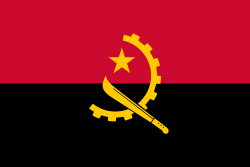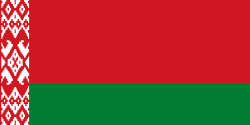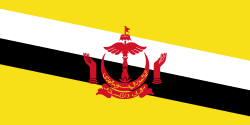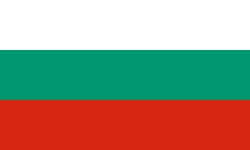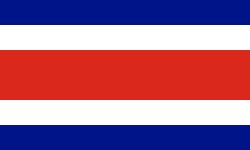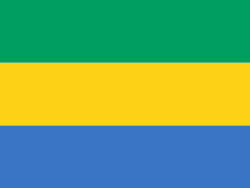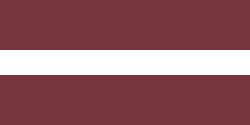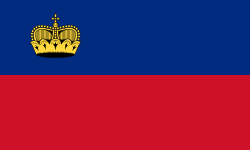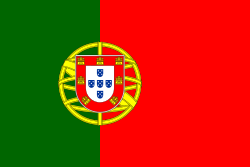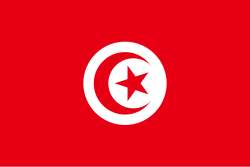UNFCCC
UNFCCC eller FCCC (United Nations Framework Convention on Climate Change) er en FN-konvention, der blev vedtaget under en miljø- og udviklingskonference, UNCED, i Rio de Janeiro i 1992.[1] Den har til formål at mindske udledningen af drivhusgasser, men har ikke nogen bindende krav. Konventionen betragtes som en forløber for Kyoto-aftalen fra 1997.
Danmark ratificerede konventionen 27. april 1993.[2] Efter at konventionen trådte i kraft i 1994, har staterne haft årlige partsmøder (Conferences of the Parties – COP) for at evaluere fremdriften og for at forhandle sig mere bindende protokoller for traktaten.
COP-konferencer
COP15
COP15 (Conferences of the Parties), FNs 15. klimakonference, en videreførelse af FN-konventionen UNFCCC, som blev afholdt i København fra 7. december 2009 til 18. december 2009. Dette møde resulterede i en ikke bindende politisk hensigtserklæring.
CO2 i atmosfæren er i 2008 35% højere end da industrialiseringen startede.
Det overordnede mål for COP15, var at opnå en ny verdensomspændende klimaaftale, som erstatning for Kyoto-aftalen når den udløber. Man nåede dog kun frem til en hensigtserklæring Copenhagen Accord der ikke er juridisk bindende.
COP16
Fandt sted i Mexico City december 2010.
COP17
COP17 fandt sted i Durban i Sydafrika fra 28. november og var sat til at slutte 9. december 2011, men blev forlænget til den 11. december 2011 om morgenen. Mødet endte med at de 194 deltagende nationer blev enige om en "køreplan", der skal sikre indgåelsen af en global aftale i 2015 med ikrafttræden i 2020. Samtidig blev man enige om at forlænge klimamålene fra Kyotoprotokollen. [3][4]
COP25
COP25 fandt sted i Madrid i Spanien fra den 2. december til den 13. december 2019 under chilensk ledelse. Mødet var oprindeligt planlagt til at skulle afholdes i Brasilien og var derefter planlagt til Chiles hovedstad Santiago de Chile, men planen blev ændret som følge af protesterne i Chile i 2019.
COP28
COP28 afholdes i Dubai i De forenede arabiske emirater fra 30. november til 12. december 2023.[5] Forud for mødet er den seneste "Emissions Gap Report" udgivet.[6]
Referencer
- ^ "Parson, E. A., P. M. Haas, and M. A. Levy. 1992. A summary of major documents signed at the earth summit and the global forum. Afsnittet 'Convention on Climate Change'". Arkiveret fra originalen 27. juni 2015. Hentet 26. juni 2015.
- ^ Forslag til folketingsbeslutning om ratifikation af De Forenede Nationers rammekonvention om klimaændringer
- ^ I-lande forlænger Kyotoaftalen
- ^ Det nåede de frem til på klima-topmødet
- ^ "UN Climate Change Conference - United Arab Emirates Nov/Dec 2023" hos Unfccc.int
- ^ "Emissions Gap Report 2023" fra Unep.org
Eksterne henvisninger
- COP15 Copenhagen 2009, hjemmeside Arkiveret 13. december 2009 hos Wayback Machine
| Spire Denne artikel om en offentlig myndighed er en spire som bør udbygges. Du er velkommen til at hjælpe Wikipedia ved at udvide den. |
Medier brugt på denne side
Flag of Albania
Flag of Austria with the red in the Austrian national colours which was official ordered within the Austrian Armed Forces (Bundesheer) in the characteristic “Pantone 032 C” (since May 2018 the Red is ordered in the characteristic “Pantone 186 C”.)
Flag of Burkina Faso
Flag of Canada introduced in 1965, using Pantone colors. This design replaced the Canadian Red Ensign design.
Det er let at give dette billede en kant
The national flag of the Democratic Republic of the Congo. Created according to the 2006 constitution : Son emblème est le drapeau bleu ciel, orné d’une étoile jaune dans le coin supérieur gauche et traversé en biais d’une bande rouge finement encadrée de jaune. (Its symbol is a sky blue flag, decorated with a yellow star in the upper left corner and crossed in the diagonal by a red strip with thin yellow borders) It seems to be identical, except for a lighter field hue, to the 1966–1971 flag.
Flag of the Ivory Coast, written by Jon Harald Søby, modified by Zscout370. The colors match to what is reported at http://fotw.vexillum.com/flags/ci.html.
Flag of the Ivory Coast, written by Jon Harald Søby, modified by Zscout370. The colors match to what is reported at http://fotw.vexillum.com/flags/ci.html.
Det er let at give dette billede en kant
Forfatter/Opretter: See File history below for details., Licens: CC0
The Flag of Dominica.
The flag of the Dominican Republic has a centered white cross that extends to the edges. This emblem is similar to the flag design and shows a bible, a cross of gold and 6 Dominican flags. There are branches of olive and palm around the shield and above on the ribbon is the motto "Dios,Patria!, Libertad" ("God, Country, Freedom") and to amiable freedom. The blue is said to stand for liberty, red for the fire and blood of the independence struggle and the white cross symbolized that God has not forgotten his people. "Republica Dominicana". The Dominican flag was designed by Juan Pablo Duarte, father of the national Independence of Dominican Republic. The first dominican flag was sewn by a young lady named Concepción Bona, who lived across the street of El Baluarte, monument where the patriots gathered to fight for the independence, the night of February 27th, 1844. Concepción Bona was helped by her first cousin María de Jesús Pina.
Flag of Ethiopia
The Flag of Europe is the flag and emblem of the European Union (EU) and Council of Europe (CoE). It consists of a circle of 12 golden (yellow) stars on a blue background. It was created in 1955 by the CoE and adopted by the EU, then the European Communities, in the 1980s.
The CoE and EU are distinct in membership and nature. The CoE is a 47-member international organisation dealing with human rights and rule of law, while the EU is a quasi-federal union of 27 states focused on economic integration and political cooperation. Today, the flag is mostly associated with the latter.
It was the intention of the CoE that the flag should come to represent Europe as a whole, and since its adoption the membership of the CoE covers nearly the entire continent. This is why the EU adopted the same flag. The flag has been used to represent Europe in sporting events and as a pro-democracy banner outside the Union.Finlands flag
The national and official state flag of Haiti; arms obtained from File:Coat of arms of Haiti.svg. The civil flag can be found at here.
bendera Indonesia
Flag of Iran. The tricolor flag was introduced in 1906, but after the Islamic Revolution of 1979 the Arabic words 'Allahu akbar' ('God is great'), written in the Kufic script of the Qur'an and repeated 22 times, were added to the red and green strips where they border the white central strip and in the middle is the emblem of Iran (which is a stylized Persian alphabet of the Arabic word Allah ("God")).
The official ISIRI standard (translation at FotW) gives two slightly different methods of construction for the flag: a compass-and-straightedge construction used for File:Flag of Iran (official).svg, and a "simplified" construction sheet with rational numbers used for this file.
Flag of Jamaica. “The sunshine, the land is green, and the people are strong and bold” is the symbolism of the colours of the flag. GOLD represents the natural wealth and beauty of sunlight; GREEN represents hope and agricultural resources; BLACK represents the strength and creativity of the people. The original symbolism, however, was "Hardships there are, but the land is green, and the sun shineth", where BLACK represented the hardships being faced.
Flag of Laos
Flag of Liechtenstein
Flag of Maldives. The colours used are Pantone 186 C for red and Pantone 348 C for green.
Flag of Mauritania, adopted in 2017. The National Assembly added red stripes to the top and bottom edges to represent “the blood shed by the martyrs of independence”.
Flag of Namibia
The national flag of Nauru. Pantone 280c (Blue) and Pantone 123c (Yellow). On Pantone's official website these colours have the hexadecimal codes of #012169 and #FFC72C.
Flag of Papua New Guinea
Colours: Pantone 186 C for red and 116 C for yellow
Flag of Portugal, created by Columbano Bordalo Pinheiro (1857–1929), officially adopted by Portuguese government in June 30th 1911 (in use since about November 1910). Color shades matching the RGB values officially reccomended here. (PMS values should be used for direct ink or textile; CMYK for 4-color offset printing on paper; this is an image for screen display, RGB should be used.)
Flag of Rwanda. The flag ratio is 2:3 with the stripes being 2:1:1. Colors are the following officially: Pantone 299 C 2X (blue), RAL 6029 (green), RAL 1023 (yellow) and RAL 1003 (golden yellow). (As of 03/08/2010, the only color used is the Pantone 299 C, which is from here. The rest of the colors are RAL shades from here.)
Flag of São Tomé and Príncipe
Flag of Senegal
The flag of Slovenia.
- "The construction sheet for the coat of arms and flag of the Republic of Slovenia
- is issued in the Official Gazette Uradni list Republike Slovenije #67, 27 October 1994
- as the addendum to the Law on the coat of arms and flag."
Used color: National flag | South African Government and Pantone Color Picker
| grøn | rendered as RGB 0 119 73 | Pantone 3415 C |
| gul | rendered as RGB 255 184 28 | Pantone 1235 C |
| rød | rendered as RGB 224 60 49 | Pantone 179 C |
| blå | rendered as RGB 0 20 137 | Pantone Reflex Blue C |
| hvid | rendered as RGB 255 255 255 | |
| sort | rendered as RGB 0 0 0 |
Flag of Syria (2024-present) and the Syria Revolution
The national flag of Kingdom of Thailand; there are total of 3 colours:
- Red represents the blood spilt to protect Thailand’s independence and often more simply described as representing the nation.
- White represents the religion of Buddhism, the predominant religion of the nation
- Blue represents the monarchy of the nation, which is recognised as the centre of Thai hearts.
Flag of Togo. Aspect ratio modified for projects that require an aspect ratio of 3:2.
Trinidad og Tobagos flag
The Flag of Vatican City State, as per the 2023 w:en:Fundamental Law of Vatican City State, reproducing Annex A which contains the official depiction of this version. See 2023 Fundamental Law of Vatican City State, art. 23, n. 1.
This 2023 flag is very similar to the flag used in the 1929 Fundamental Law of Vatican City State, see here, p. 35. Thus, it is in the public domain.



